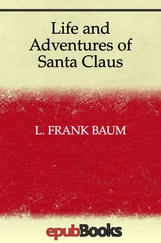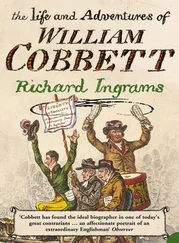Billy Dixon - Life and Adventures of 'Billy' Dixon
Здесь есть возможность читать онлайн «Billy Dixon - Life and Adventures of 'Billy' Dixon» — ознакомительный отрывок электронной книги совершенно бесплатно, а после прочтения отрывка купить полную версию. В некоторых случаях можно слушать аудио, скачать через торрент в формате fb2 и присутствует краткое содержание. Издательство: Иностранный паблик, Жанр: foreign_antique, foreign_prose, на английском языке. Описание произведения, (предисловие) а так же отзывы посетителей доступны на портале библиотеки ЛибКат.
- Название:Life and Adventures of 'Billy' Dixon
- Автор:
- Издательство:Иностранный паблик
- Жанр:
- Год:неизвестен
- ISBN:нет данных
- Рейтинг книги:3 / 5. Голосов: 1
-
Избранное:Добавить в избранное
- Отзывы:
-
Ваша оценка:
- 60
- 1
- 2
- 3
- 4
- 5
Life and Adventures of 'Billy' Dixon: краткое содержание, описание и аннотация
Предлагаем к чтению аннотацию, описание, краткое содержание или предисловие (зависит от того, что написал сам автор книги «Life and Adventures of 'Billy' Dixon»). Если вы не нашли необходимую информацию о книге — напишите в комментариях, мы постараемся отыскать её.
Life and Adventures of 'Billy' Dixon — читать онлайн ознакомительный отрывок
Ниже представлен текст книги, разбитый по страницам. Система сохранения места последней прочитанной страницы, позволяет с удобством читать онлайн бесплатно книгу «Life and Adventures of 'Billy' Dixon», без необходимости каждый раз заново искать на чём Вы остановились. Поставьте закладку, и сможете в любой момент перейти на страницу, на которой закончили чтение.
Интервал:
Закладка:
I ran as quickly as possible to where my mules were eating their grain, and without halting jerked the harness from the rack to throw it onto the lead mule. With both feet this mule kicked me squarely in the small of the back. I dropped as if I had been struck with an axe, and found myself partly paralyzed, and scarcely able to move. Recovering slightly, I regained my feet, but found that I could not straighten my body. I was game, however. Calling Frickie, I told him what had happened, and asked him to help me harness my mules, and not to say a word to anybody about my being hurt. Were it known that I had been kicked, I might be sent to the hospital. Frickie was a good fellow, and I was soon on my way to the Fort. By next morning I was in fairly good shape.
Night had come by the time we reached Fort Harker. We had to load and then drive about three miles to camp, on the Smoky Hill. The last two wagons were loaded with ammunition for a small Gatling gun, not an undesirable equipment on Indian peace expeditions in those days.
We pulled out bright and early next morning for Plum Creek, where there was a small road-ranch. Next day we reached Fort Zarah on Walnut Creek and on the third day we went on up the Arkansas and crossed it about seven miles below Fort Larned. We reached Medicine Lodge on the fourth day, where the treaty was to be held.
All along the way on this trip we were traveling through countless numbers of buffaloes. I remember seeing a wounded buffalo cow followed by six big lobo wolves. No hoofed animal could withstand these savage beasts – they were a terror to other wild life on the Plains. Wantonly, several buffaloes had been shot, and left lying to rot on the ground. An orderly came riding down the line with strict orders, that if another man in the outfit fired another shot at a buffalo he would be placed in irons.
Between the Arkansas River and Medicine Lodge we were met by a number of noted Indian chiefs, mounted upon their finest horses and arrayed in their most splendid costumes. They carried themselves with dignity and in every feature was revealed their racial pride and their haughty contempt of the white man. Among them I recall Satanta, Kicking Bird, and Black Kettle.
Satanta, chief of the Kiowas, rode a big black horse, and presented a magnificent appearance. It was because of his complaint that the order had been issued against the killing of buffaloes – a complaint that lay at the very heart of the grievances of the Indian against the white man in frontier days. He declared that the buffaloes were the property of himself and his people, and to destroy the buffalo meant the destruction of the Indian. Leading a nomadic life, which prevented his tilling the soil, even if he had wished to engage in agriculture, which he did not, the Indian saw that he would be deprived of his principal and most necessary food – buffalo meat – if the buffaloes were killed.
At a later day General Phil. Sheridan, to subdue and conquer the Plains tribes for all time, urged and practiced the very thing that Satanta was fearful might happen. In the early 70's, the state legislatures of Kansas and Colorado, listening to the appeal of the Indians, through sympathetic white persons, enacted laws to stop the slaughtering of the buffaloes, General Sheridan at that time was in command of the Military Department of the Southwest, with headquarters at San Antonio. The Texas legislature, in session at Austin, was at the point of declaring against the merciless slaughter of buffaloes that was then under way in the Staked Plains and Panhandle regions. General Sheridan is said to have told the legislators that the state should give to every buffalo-hunter a bronze medal, on one side of which should be a dead buffalo, and on the other, a discouraged Indian, adding:
"These men have done more in the last year to settle the vexed Indian question than the entire regular army has done in the last thirty years. They are destroying the Indians' commissary; and it is a well-known fact that an army losing its base of supplies is placed at a great disadvantage. Send them powder and lead, if you will; but, for the sake of a lasting peace, let them kill, skin, and sell until the buffaloes are exterminated. Then your prairies can be covered with speckled cattle, and the festive cowboy, who follows the hunter as a second fore-runner of an advanced civilization."
The Texas legislature accepted General Sheridan's advice. The Texans as a people were readily disposed to agree with that point of view, for in no State did the Plains Indians commit crimes more cruel and horrible than in Texas.
On our way to Medicine Lodge our train of sixty wagons was strung out for a distance of about two miles, accompanied by a strong escort of soldiers.
The members of this Indian Peace Commission were: N. G. Taylor, Commissioner of Indian Affairs; John B. Henderson, United States Senator; General William Tecumseh Sherman; General W. L. Harney; John B. Sanborn; General A. H. Terry; S. F. Tappan, and General C. C. Augur.
Among the notable chiefs were: Satanta, Kicking Bird, Black Kettle, Medicine Arrow, and Lone Wolf. Black Kettle was then at the height of his power, but soon to meet the death he had so often inflicted. He led the Cheyenne raid in the valley of the Solomon River in August, 1868, and had been in the Sand Creek fight in Colorado, November, 1864, where Colonel Chivington, commanding a regiment of Colorado troops massacred a lot of Cheyennes. I camped on that battleground in 1870 while hunting buffaloes. The spot was still strewn with bones of the dead, and the trees were yet scarred by the hail of bullets that had come from the guns of the soldiers, who killed old and young, women and children, without mercy, and atrociously mutilated the bodies of the dead. In 1866, at Fort Harker, Black Kettle had made a speech of great eloquence, asking the Government not to permit the building of railroads through the Indian country, as it would drive away the buffaloes and leave the Indians to starve.
This fear of the change that would follow the building of railroads across the Plains was night and day in the heart of the Indian. No chief made a speech in which he did not refer to it. In June, 1871, Little Raven, Powder face, and Bird Chief, Arapahoes; Little Robe and Stone Calf, Cheyennes, and Buffalo Good, Wichita, were taken to Washington and Boston, that they might be impressed with the white man's strength, and futility of the Indians' further resistance the Government. Stone Calf, in a speech at Tremont Temple, Boston, handled the railroad question in this manner.
"They (the Government) said they would teach our people to plant and raise corn, and to build our habitations from trees. But before they ever ploughed or planted an acre of corn for us they commenced to build railroads through our country. What use have we for railroads in our country? What have we to transport from our nations? Nothing. We are living wild, really living on the prairies as we have in former times. I do not see that we have been benefitted in the least by all the treaties that we have made with the United States Government."
We went into camp on Medicine Lodge Creek, to wait until the gathering Indians had come in. Near us was a small village of Indians, to whom a runner came on the third day to notify them that some of their livestock had been stolen by the Kaws, a neighboring tribe. We could see the wave of excitement run over the village, and the bucks running to and fro, getting ready for the pursuit. The squaws were no less active. They helped saddle the ponies, etc., and jabbered and screamed to each other in a way that would have made it hard for the marauders had they been captives in the custody of the squaws. As each buck got ready, he rode away without waiting for his companions. They returned later in the day with their ponies, but had been unable to overtake the thieves.
Читать дальшеИнтервал:
Закладка:
Похожие книги на «Life and Adventures of 'Billy' Dixon»
Представляем Вашему вниманию похожие книги на «Life and Adventures of 'Billy' Dixon» списком для выбора. Мы отобрали схожую по названию и смыслу литературу в надежде предоставить читателям больше вариантов отыскать новые, интересные, ещё непрочитанные произведения.
Обсуждение, отзывы о книге «Life and Adventures of 'Billy' Dixon» и просто собственные мнения читателей. Оставьте ваши комментарии, напишите, что Вы думаете о произведении, его смысле или главных героях. Укажите что конкретно понравилось, а что нет, и почему Вы так считаете.










